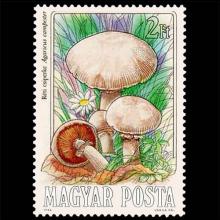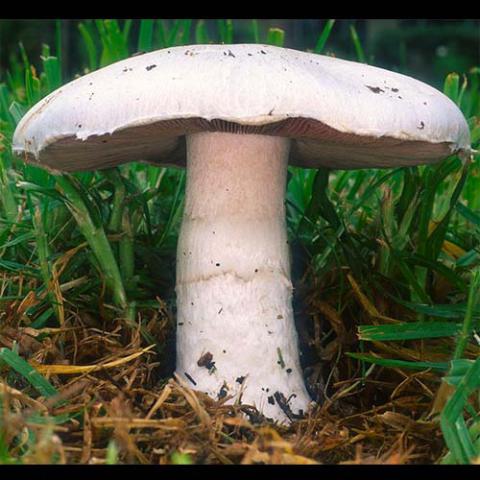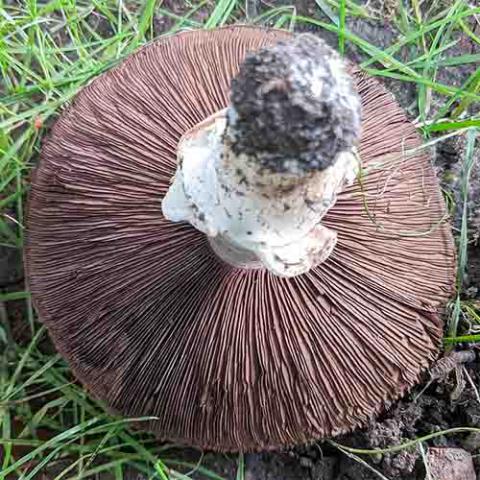NAMES
TAXONOMY
FUNGI ID
THERAPEUTIC
Hungary
Issued:
Stamp:
Agaricus campestris
Hungary
Issued:
Stamp:
Agaricus campestris
Hungary
Issued:
Stamp:
Agaricus campestris
Genus species (Fungi): Agaricus campestris
Agaricus campestris is a widely eaten gilled mushroom closely related to the cultivated button mushroom Agaricus bisporus. It is commonly known as the field mushroom or, in North America, meadow mushroom.
Taxonomy
This species was originally noted and named in 1753 by Carl Linnaeus as Agaricus campestris. It was placed in the genus Psalliota by Lucien Quelet in 1872. Some variants have been isolated over the years, a few of which now have species status, for example, Agaricus bernardii Quel. (1878), Agaricus bisporus (J.E. Lange) Imbach (1946), Agaricus bitorquis (Quel.) Sacc. (1887), Agaricus cappellianus Hlavacek (1987), and Agaricus silvicola (Vittad.) Peck (1872). Some were so similar they did not warrant even varietal status, while others have retained it. Agaricus campestris var. equestris (F.H.Moller) Pilat (1951) is still valid. A. campestris var. isabellinus (F.H.Moller) Pilat (1951), and A. campestris var. radicatus, are possibly still valid too.
The Latin specific epithet campestris means "of the fields". Common names given to the fungus include "meadow mushroom", "pink bottom", and "field mushroom".
An analysis of ribosomal DNA of a limited number of members of the genus showed A. campestris to be an early offshoot in the genus and sister taxon to A. cupreobrunneus.
Description
The cap is white, may have fine scales, and is 5 to 10 cm (2.0 to 3.9 in) in diameter; it is first hemispherical in shape before flattening out with maturity. The gills are initially pink, then red-brown and finally a dark brown, as is the spore print. The 3 to 10 cm (1.2 to 3.9 in) tall stipe is predominantly white and bears a single thin ring. The taste is mild. The white flesh bruises a dingy reddish brown, as opposed to yellow in the inedible (and somewhat toxic) Agaricus xanthodermus and similar species. The thick-walled, elliptical spores measure 5.5–8.0 μm by 4–5 μm. Cheilocystidia are absent.
Edibility
Although edible, this mushroom is not commercially cultivated on account of its fast maturing and short shelf-life. Culinary uses of the meadow mushroom include eating it sauteed or fried, in sauces, or even sliced raw and included in salads. In flavor and texture, this mushroom is similar to the white button mushroom available in grocery stores in most Western countries. Among the similar species mentioned above, there have been cases (in fact the most common cause of fatal fungus poisoning in France) where the deadly toxic destroying angel (Amanita virosa) has been consumed by individuals who mistook it for this species. The edibility of specimens collected from lawns is uncertain because of possible contamination with pesticides or other chemicals.
Reference: Wikipedia
Photos: Nathan Wilson, Accuruss



